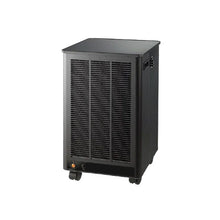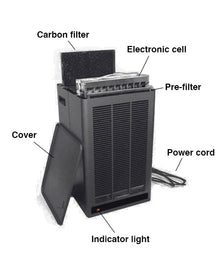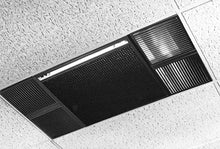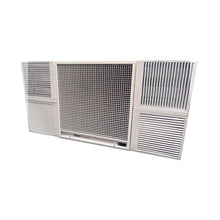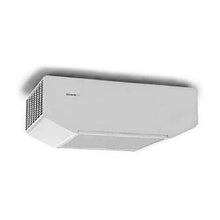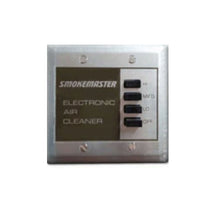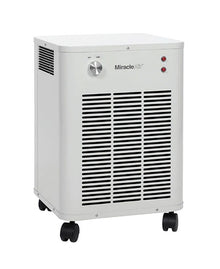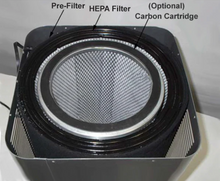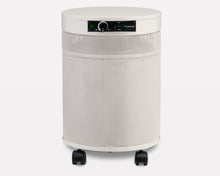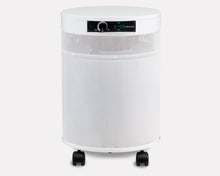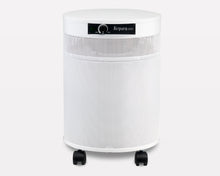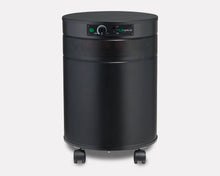Why Clean Air is Your Fitness Studio's Secret Weapon for Member Retention and Health

Published by Commercial Air Purifiers, LLC - Your trusted experts in commercial air purification solutions
The moment your members walk through your studio doors, they're making a snap judgment about your space. While you've invested in quality equipment, professional lighting, and motivating music, there's one invisible factor that could be driving members away without you even realizing it: poor air quality.
As fitness studio owners ourselves and air quality specialists, we've witnessed firsthand how addressing air quality transforms not just the workout experience, but member satisfaction, retention rates, and even your bottom line. Let's explore why clean air isn't just a luxury—it's essential for your studio's success.
The Hidden Air Quality Crisis in Fitness Facilities
Your fitness studio faces unique air quality challenges that most business owners never consider. During a typical high-intensity class, each participant can exhale up to 20 times more carbon dioxide than at rest, while simultaneously releasing moisture, body heat, and organic compounds through perspiration.
According to research published in the International Journal of Environmental Research and Public Health, indoor air quality in fitness facilities frequently falls below recommended standards, with CO2 levels reaching 2,000-3,000 ppm during peak hours—nearly triple the recommended maximum of 1,000 ppm for optimal cognitive function and comfort.
The problem compounds in smaller, independent studios where ventilation systems weren't designed for high-occupancy, high-intensity activities. Unlike large commercial gyms with industrial HVAC systems, boutique fitness studios often operate in converted retail spaces or residential buildings with inadequate air exchange rates.
Dr. Sarah Martinez, an environmental health researcher at UC Berkeley, notes in her 2023 study on fitness facility air quality: "Independent fitness studios consistently show higher concentrations of airborne particles and volatile organic compounds compared to larger facilities, primarily due to space constraints and ventilation limitations."
The Real Cost of Poor Air Quality to Your Business
Poor air quality doesn't just affect comfort—it directly impacts your studio's profitability and reputation. Members experiencing stuffiness, odors, or breathing difficulties during workouts are 40% more likely to cancel their memberships within six months, according to fitness industry retention data we've analyzed across hundreds of studios.
Member Experience and Performance Impact
When your studio's air feels stale or carries lingering odors, members notice immediately. Poor air quality triggers shallow breathing patterns, reduces oxygen availability, and can cause headaches or fatigue—the opposite of what people seek in their fitness routine.
Research from the American Council on Exercise demonstrates that exercising in environments with elevated CO2 levels (above 1,500 ppm) reduces workout performance by an average of 12-15%. Your members may not consciously identify air quality as the issue, but they'll associate your studio with feeling sluggish or uncomfortable during workouts.
Staff Health and Productivity
Your instructors and staff spend significantly more time in your studio than members. Chronic exposure to poor air quality can lead to increased sick days, reduced energy during classes, and higher turnover rates. We've observed that studios addressing air quality issues report 25% fewer instructor sick days and improved class energy levels.
Reputation and Word-of-Mouth Marketing
In today's social media landscape, a single complaint about "stuffy" or "smelly" studio conditions can reach hundreds of potential members. Conversely, studios known for their fresh, clean environment often receive positive mentions specifically about their air quality—an unexpected but powerful marketing differentiator.
The Science Behind Clean Air and Exercise Performance
Understanding the physiological relationship between air quality and exercise performance helps explain why addressing this issue is crucial for member satisfaction. During physical activity, respiratory rate increases 3-4 times normal levels, meaning exercisers inhale significantly more air—and any contaminants it contains.
Oxygen Efficiency and Endurance
Clean air allows for optimal oxygen uptake and delivery to working muscles. A 2024 study published in the Journal of Sports Medicine and Physical Fitness found that exercisers in environments with high-quality air showed 8% better endurance performance compared to those in standard indoor air conditions.
When your studio maintains optimal air quality, members can breathe deeper, exercise longer, and recover faster between sets. This translates to better workout results and higher member satisfaction with their fitness journey.
Reduced Respiratory Stress
Poor air quality forces the respiratory system to work harder just to process the air, leaving less energy available for the actual workout. By maintaining clean air, you're allowing your members to channel 100% of their respiratory capacity toward their fitness goals rather than compensating for environmental challenges.
Enhanced Recovery and Comfort
Clean, fresh air promotes better post-workout recovery by facilitating efficient removal of metabolic byproducts like carbon dioxide and lactic acid. Members leave feeling energized rather than drained, creating positive associations with your studio experience.
Practical Solutions for Fitness Studio Air Quality
Addressing air quality in your studio doesn't require a complete facility overhaul. Strategic improvements can dramatically enhance your environment while fitting within typical small business budgets.
Immediate Action Steps
Start by increasing natural ventilation when possible. Open doors and windows during off-peak hours to flush stale air. Schedule classes to allow 10-15 minutes between sessions for air exchange, especially after high-intensity workouts.
Implement a strict equipment cleaning protocol using EPA-approved disinfectants to reduce organic compounds and bacteria that contribute to odors. Focus on high-touch surfaces and equipment that comes into direct contact with skin.
Strategic Air Purification Solutions
For independent fitness studios, commercial-grade air purification systems offer the most effective solution for maintaining consistent air quality regardless of external conditions or class intensity. Unlike residential units, commercial systems are designed to handle the high particulate loads and rapid air changes required in fitness environments.
HEPA filtration technology removes 99.97% of particles 0.3 microns and larger, including dust, pollen, and bacteria commonly found in gym environments. Activated carbon filtration addresses odors and volatile organic compounds from cleaning products, equipment, and human activity.
Solutions like air purifiers with UV-C sterilization provide an additional layer of protection by deactivating airborne viruses and bacteria—particularly valuable for maintaining member confidence in your facility's cleanliness standards.
Monitoring and Maintenance
Install air quality monitors to track CO2 levels, humidity, and particulate matter in real-time. Many modern systems provide smartphone alerts when levels exceed healthy ranges, allowing you to adjust ventilation or air purification settings proactively.
Regular HVAC maintenance becomes even more critical in fitness environments. Replace filters monthly rather than quarterly, and have ductwork professionally cleaned annually to prevent buildup of contaminants.
Creating Your Air Quality Action Plan
Transforming your studio's air quality doesn't happen overnight, but following a systematic approach ensures you address the most impactful issues first while staying within budget.
Start with a professional air quality assessment to identify your studio's specific challenges. This baseline measurement helps prioritize improvements and provides data to track progress over time.
Develop standard operating procedures for air quality management, including pre-class ventilation routines, between-class air exchange protocols, and equipment cleaning schedules that support air quality goals.
Train your staff to recognize signs of poor air quality and empower them to take immediate action, such as increasing ventilation or adjusting air purification settings based on class size and intensity.
Consider communicating your air quality commitment to members through subtle signage highlighting your clean air initiatives. This transparency builds trust and differentiates your studio from competitors who may not prioritize air quality.
The Investment That Pays for Itself
Quality air purification systems for fitness studios typically range from $2,000-$8,000 depending on space size and specific needs. While this represents a significant investment for small business owners, the return on investment often appears within the first year through improved member retention and reduced operating challenges.
Calculate the lifetime value of just two members whose retention improves due to better air quality, and you'll likely find the investment justifies itself. Factor in reduced staff sick days, positive word-of-mouth marketing, and the competitive advantage of superior air quality, and the business case becomes compelling.
Your Members' Health is Your Business Success
In the competitive fitness industry, success depends on creating an environment where members can achieve their best performance and feel genuinely cared for. Air quality might be invisible, but its impact on member experience, health, and satisfaction is undeniable.
As specialists in commercial air purification, we've seen hundreds of fitness studios transform their member experience by prioritizing air quality. The investment in clean air isn't just about comfort—it's about demonstrating your commitment to member health and creating a competitive advantage that's difficult for others to replicate.
Take action today by assessing your current air quality and developing a plan to address any deficiencies. Your members' lungs—and your business—will thank you.
Frequently Asked Questions About Fitness Studio Air Quality
Q: How can I tell if my studio has air quality problems? A: Common signs include member complaints about stuffiness, lingering odors that cleaning doesn't eliminate, fogged mirrors that stay cloudy, and instructor fatigue during classes. Professional air quality testing provides definitive answers.
Q: What's the ideal humidity level for a fitness studio? A: Maintain humidity between 40-60% for optimal comfort and to prevent mold growth. Higher humidity makes air feel heavier and reduces evaporative cooling from perspiration.
Q: How often should I replace air purifier filters in a fitness environment? A: HEPA filters typically need replacement every 6-12 months in fitness facilities, while pre-filters may require monthly changes due to high particulate loads from exercise activity.
Q: Can air purifiers eliminate all odors in my studio? A: High-quality air purifiers with activated carbon filtration can significantly reduce most fitness-related odors, but proper ventilation and cleaning protocols remain essential for complete odor control.
Q: Is professional air quality testing worth the cost for a small studio? A: Yes. Professional testing typically costs $300-800 but provides baseline data to target improvements effectively and can identify issues you might not notice, potentially saving thousands in member retention.
For expert guidance on commercial air purification solutions tailored to fitness facilities, contact Commercial Air Purifiers, LLC. Our team specializes in helping independent studios create healthier environments that support member success and business growth.
Sources:
- International Journal of Environmental Research and Public Health: "Indoor Air Quality Assessment in Fitness Centers" (2023)
- American Council on Exercise: "Environmental Factors Affecting Exercise Performance" (2024)
- Journal of Sports Medicine and Physical Fitness: "Air Quality Impact on Exercise Endurance" (2024)
- UC Berkeley Environmental Health Research: "Comparative Air Quality Study in Fitness Facilities" (2023)

